Visual Guide to Agrivoltaics and Wildlife-Friendly Solar

Many large-scale solar facilities operate on lands formerly in agricultural production. However, solar power production isn't inherently incompatible with agricultural activities. Agrivoltaics — or the placement of a solar energy system on the same parcel of land as agricultural production — can help communities preserve local agricultural activities or heritage and capture clean energy benefits.
Beyond agrivoltaics, large-scale solar development can also expand or preserve wildlife habitat. For example, a growing number of solar facilities are incorporating native pollinator-friendly vegetation or providing wildlife-friendly fencing.
Solar Farms Support Agriculture and Wildlife Conservation
While some solar developers are embracing agrivoltaics or wildlife-friendly project designs, planners and local officials can promote more widespread adoption by updating local plans and zoning regulations to require or incentivize specific project types or features. The photos below illustrate how modest changes to facility design can expand the benefits of solar development.
Solar Power and Crop Production
Both solar panels and crops benefit from colocation, depending on factors such as crop type and solar array configuration. Shading by solar panels can keep crops cool and reduce the need for watering, which is particularly helpful for dry areas with high heat.

Crops can be planted between rows of solar panels, such as at the Photovoltaic Central Array Testing site at the National Renewable Energy Laboratory's South Table Mountain campus in Golden, Colorado. Raised beds, like the ones being prepared here, can accommodate both produce and flowers that workers can easily access. Photo by Werner Slocum / NREL 69144.
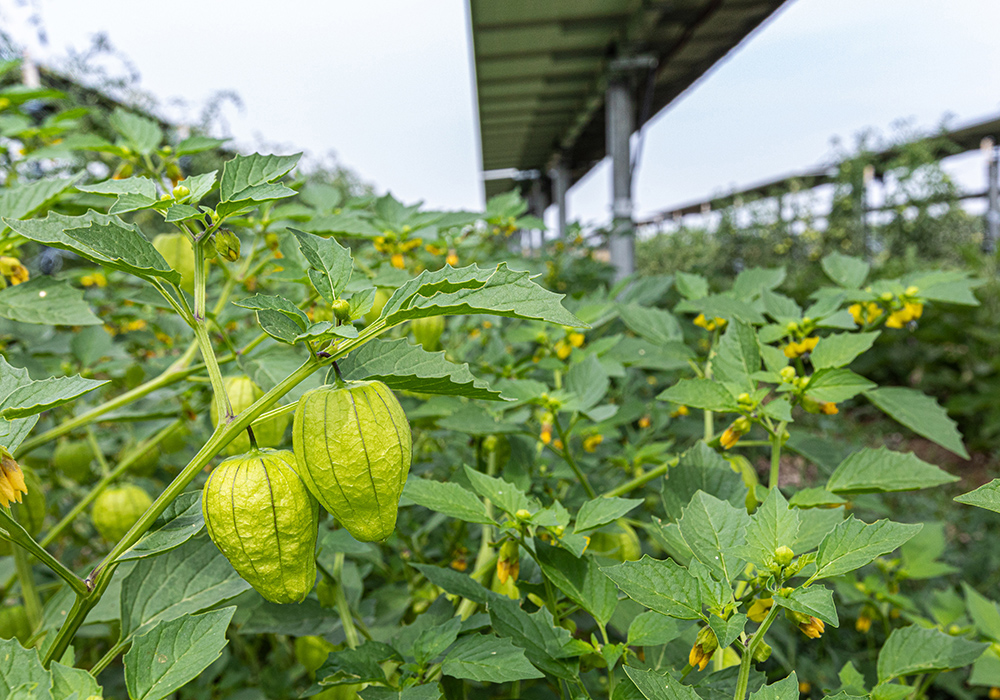
Crops, such as these tomatillos at Jack's Solar Garden in Longmont, Colorado, can also be planted directly underneath solar panels. Jack's Solar Garden is a five-acre community solar project with a rated capacity of 1.2 MW. Photo by Werner Slocum / NREL 65552.
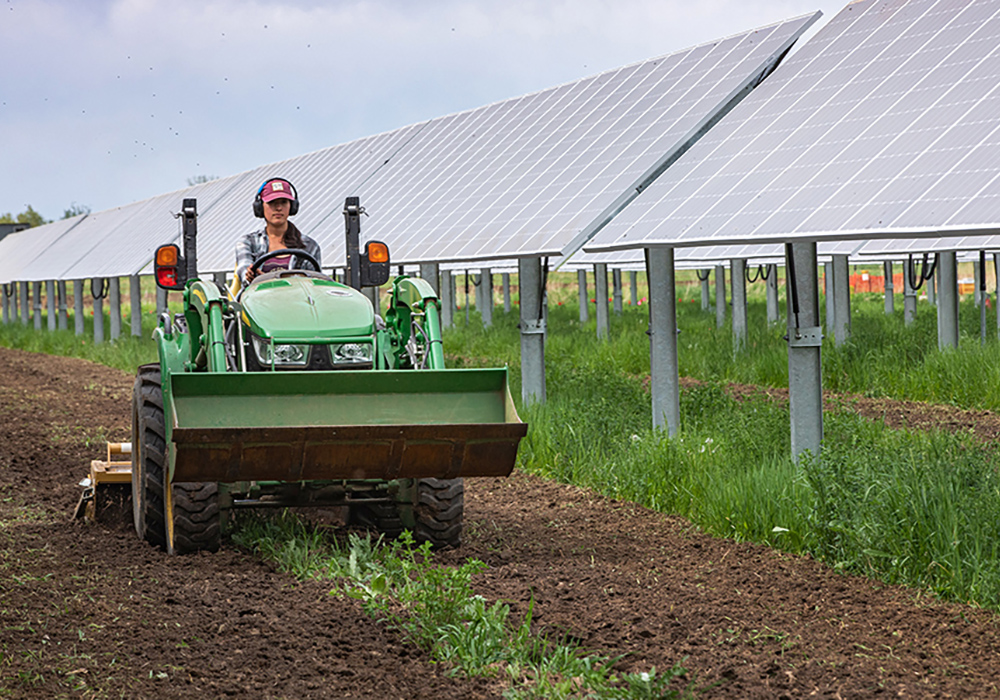
Other types of produce have successfully been grown at Jack's Solar Garden, such as carrots and various forms of beans. Necessary equipment like tractors can maneuver around solar arrays as necessary, allowing farmers to till soil for crop production. Photo by Werner Slocum / NREL 64440.
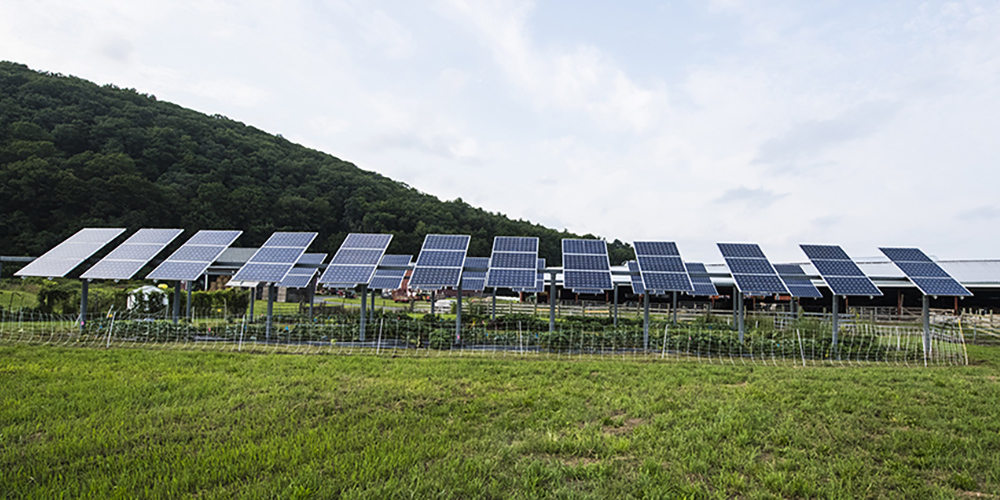
This solar energy system at the UMass Crop Animal Research and Education Center in South Deerfield, Massachusetts, shows a simple fencing technique around a crop of vegetables grown beneath the panels. Photo by Dennis Schroeder / NREL 53151.

The Maces Pond Agrivoltaic Project is a 10-acre site in Rockport, Maine, with a rated capacity of 4.2 MW. While some sites introduce crop production after the construction of a solar system, this site already had an existing wild blueberry farm. Photo by BlueWave Solar.
Solar Power and Grazing
Grazing of some types of animals, such as sheep, rabbits, and cows, under solar panels is also possible. Grazing animals help carry and spread seeds in pollinator-friendly habitats. They can also reduce the need for vegetation management, and the movement of these animals can compact soil.
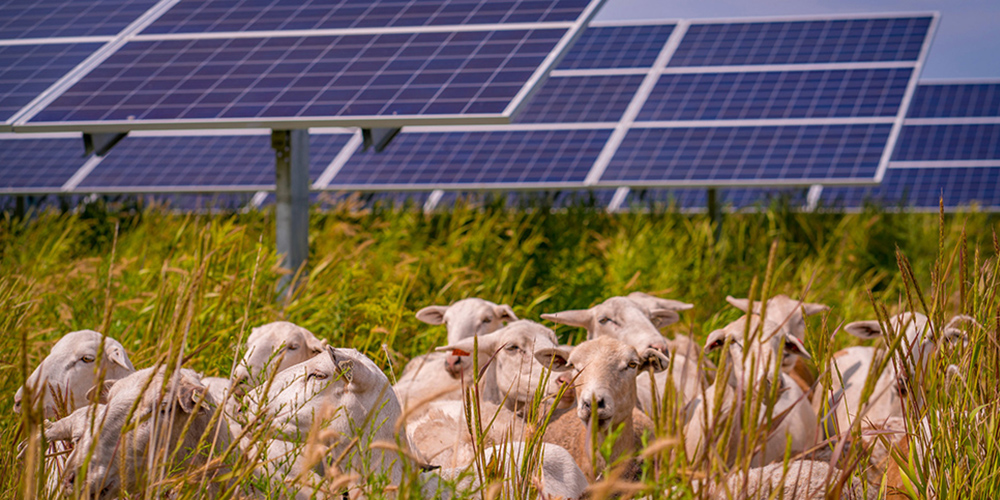
The Aurora Solar Project in Minnesota is a 16-site project that has a cumulative rated capacity of 150 MW. In partnership with Minnesota Native Landscapes, Enel Green Power developed a grazing plan with specific species of livestock that best suit the landscape. Photo by Enel Green Power.
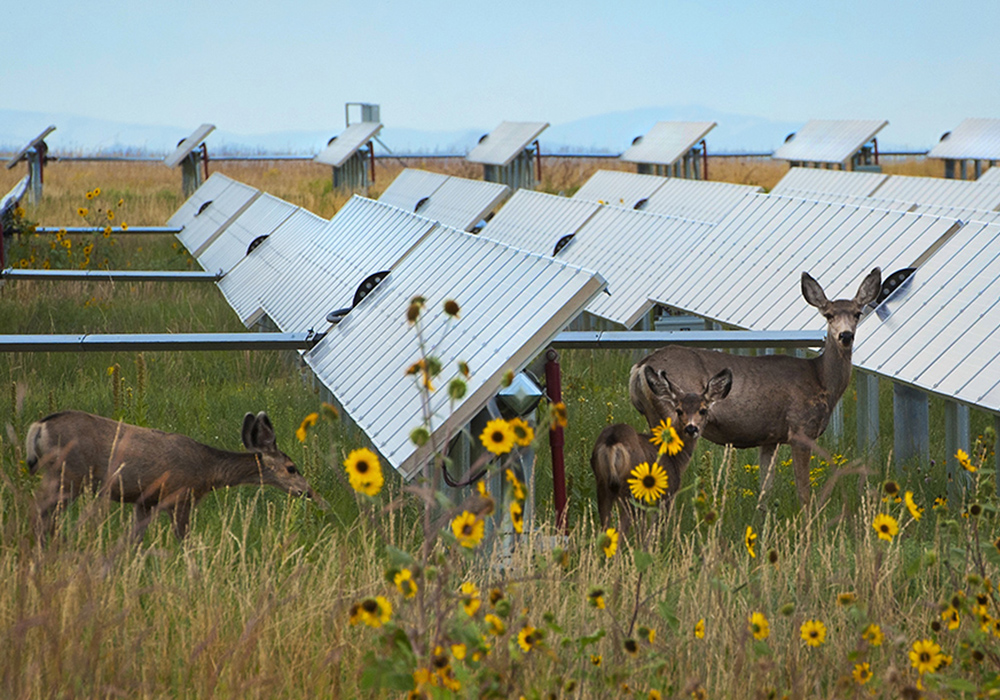
Solar projects can also support local wildlife grazing. Fencing around sites can be specially designed to accommodate wildlife movement. This practice is most useful for sites that may need more vegetation management. Photo by Dennis Schroeder / NREL 35872.
Solar Power and Wildlife Movement
Many large-scale solar facilities use fencing to control site access. With careful design, this fencing can minimize disruption to wildlife movement.
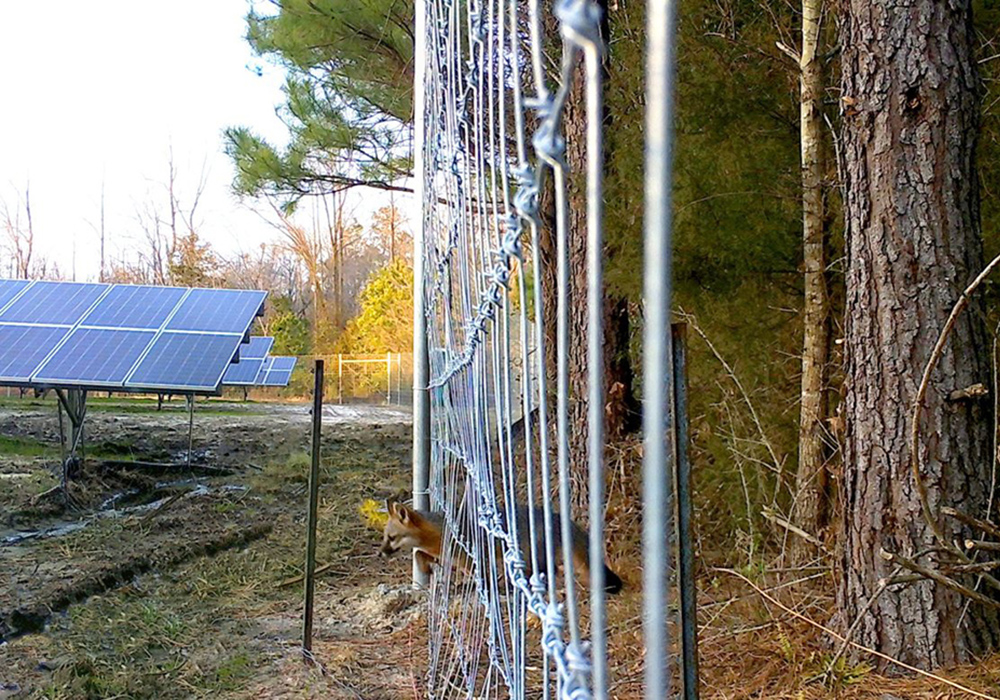
Pine Gate Renewables has installed permeable fences at two sites in North Carolina. At this site in Moore County, North Carolina, a motion capture camera recorded a fox passing through the fence. Image courtesy of Liz Kalies, The Nature Conservancy.
Pollinator-Friendly Solar
As a clean energy source, solar power is already providing environmental and ecological benefits to communities. However, solar projects can go one step further to restore local ecology and biodiversity by planting native vegetation that supports the local population of pollinators.
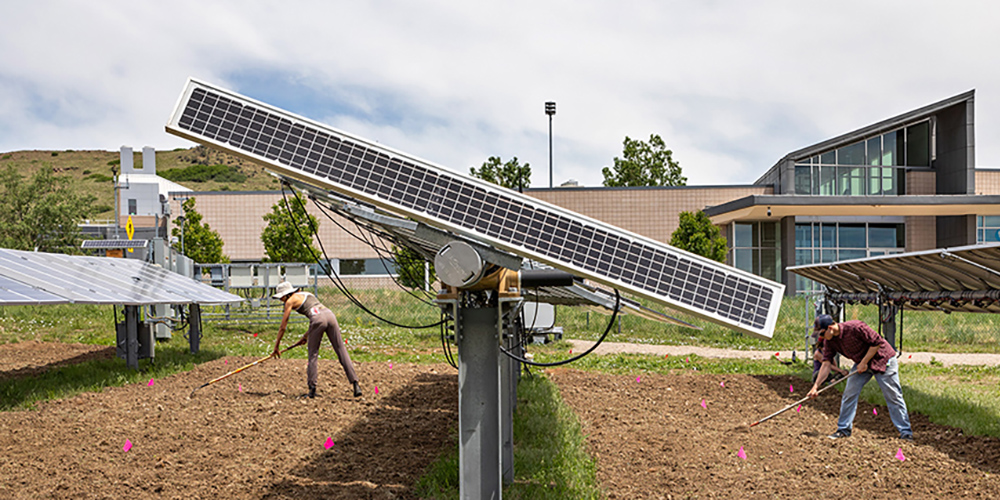
NREL employees raking soil over flower seeds at NREL's South Table Mountain Campus in Golden, Colorado. While establishing native vegetation on solar project sites requires more effort upfront than non-native turf grass, the benefits are long-lasting. Native vegetation does not require the maintenance needed for other types of landscaping. The roots of these native plants can restore soil and improve water retention. Photo by Werner Slocum / NREL 69112.
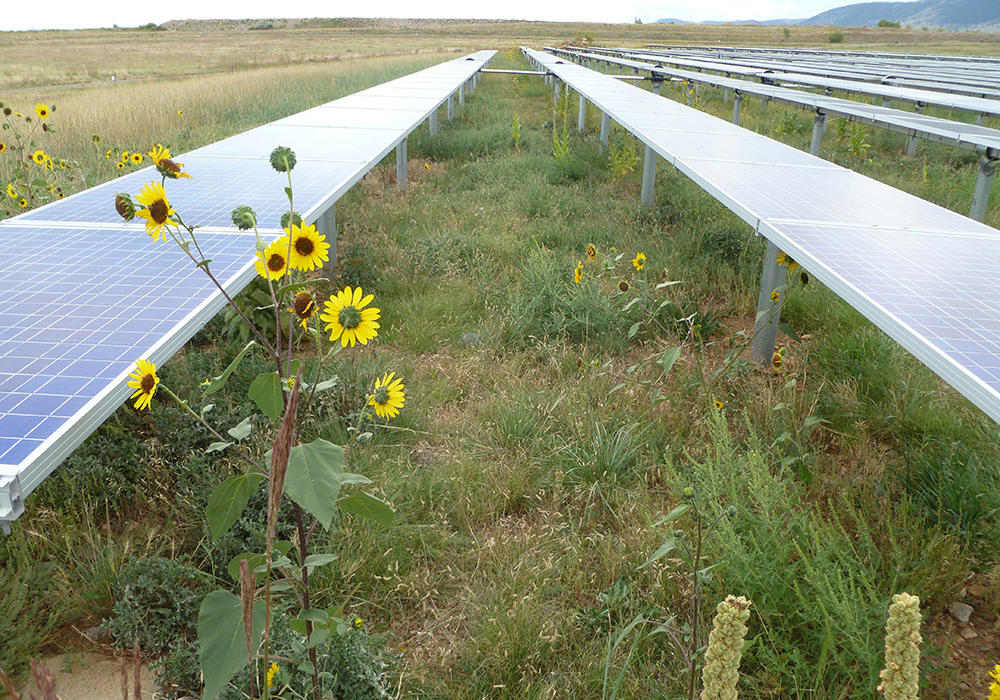
This 1 MW solar energy system at the National Wind Technology Center in Boulder, Colorado, shows what native vegetation can look like three years after the initial planting. This site was part of a study to support ecologically sensitive land management beneath solar arrays, including different native grasses, seedbed preparation, and means of seed protection. While native vegetation is lower maintenance, establishing a pollinator habitat requires thoughtful approaches. Photo by David Buckner / ESCO Associates.
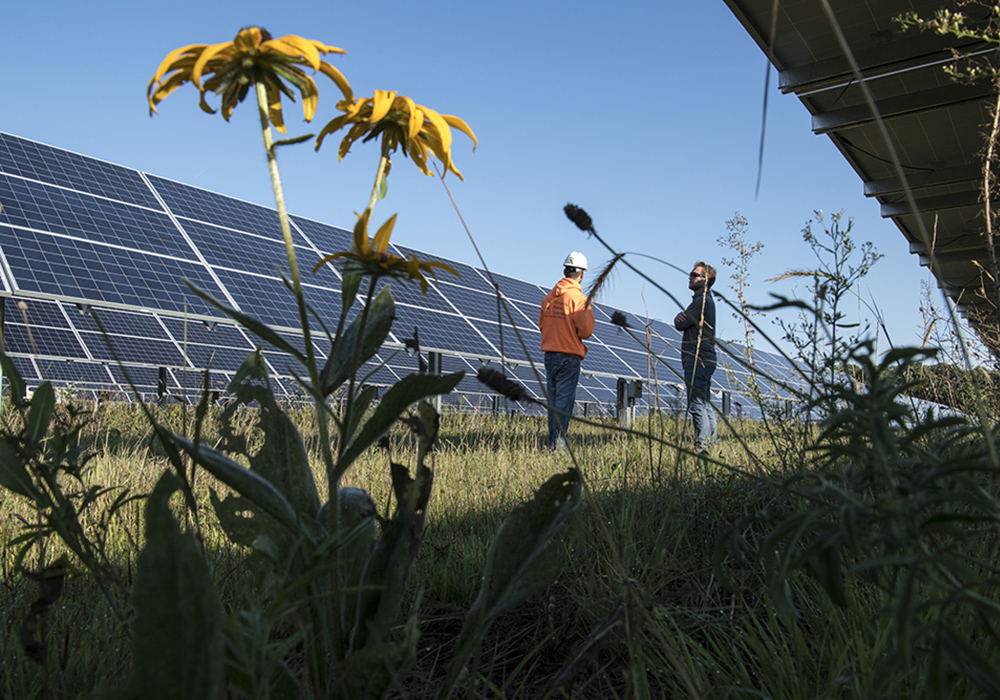
Developers can work with local ecological experts to plan which pollinator-friendly vegetation is best for their site. This pollinator habitat was planted underneath the solar array at the Chisago Solar Site, in partnership with Minnesota Native Landscapes, as part of the Aurora Solar Project in Minnesota. Photo by Dennis Schroeder / NREL 53047.
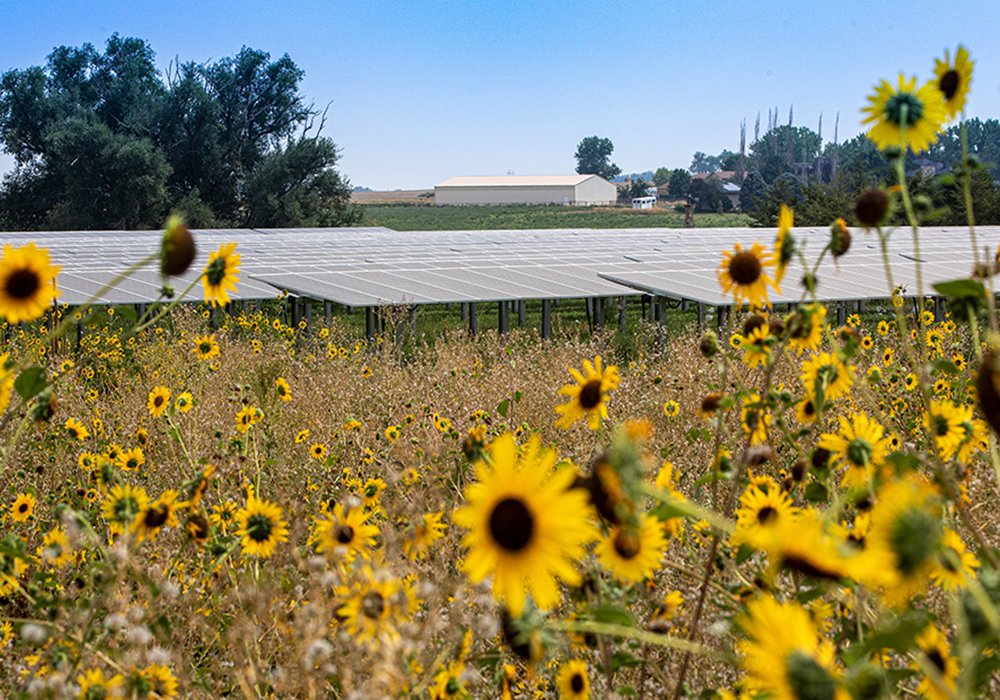
While crop production is a primary activity at Jack's Solar Garden, the inclusion of these sunflowers shows that pollinator-friendly solar and crop production can go hand in hand. Photo by Werner Slocum / NREL 65601.
Solar-agriculture Synergy Projects Growing Nationwide
The examples above are far from exhaustive. The U.S. Department of Energy's InSPIRE project is actively tracking examples of agrivoltaic and ecologically beneficial projects across the country. Its Agrivoltaics Map already lists dozens of active projects, with large clusters in the upper Midwest and the Northeast.
Just as agricultural activities vary from place to place, the combination of solar production and agriculture can also vary based on the size and type of the solar system, as well as the local flora, fauna, and landscape. Communities who want to maintain agricultural heritage or production while still benefiting from solar development can use local plans, regulations, and development partnerships to encourage or require design features that are low-impact and environmentally friendly to increase the value of these projects.
Solar@Scale
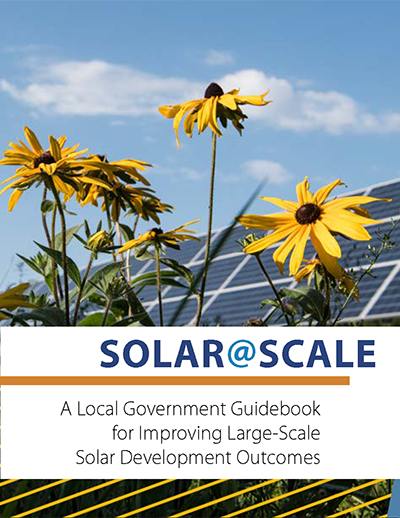
Solar@Scale is a partnership between the International City/County Management Association (ICMA) and the American Planning Association (APA) that aims to help cities, towns, counties, and special districts understand and realize the potential benefits of large-scale solar development.
Have a question about Solar@Scale or want to share your experiences with planning and zoning for large-scale solar development? Contact solar@planning.org.
Top image: The Gold Tree Solar Farm at Cal Poly San Luis Obispo (AgriSolar Clearinghouse / Flickr (CC BY 2.0))


